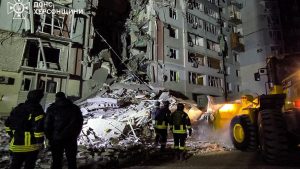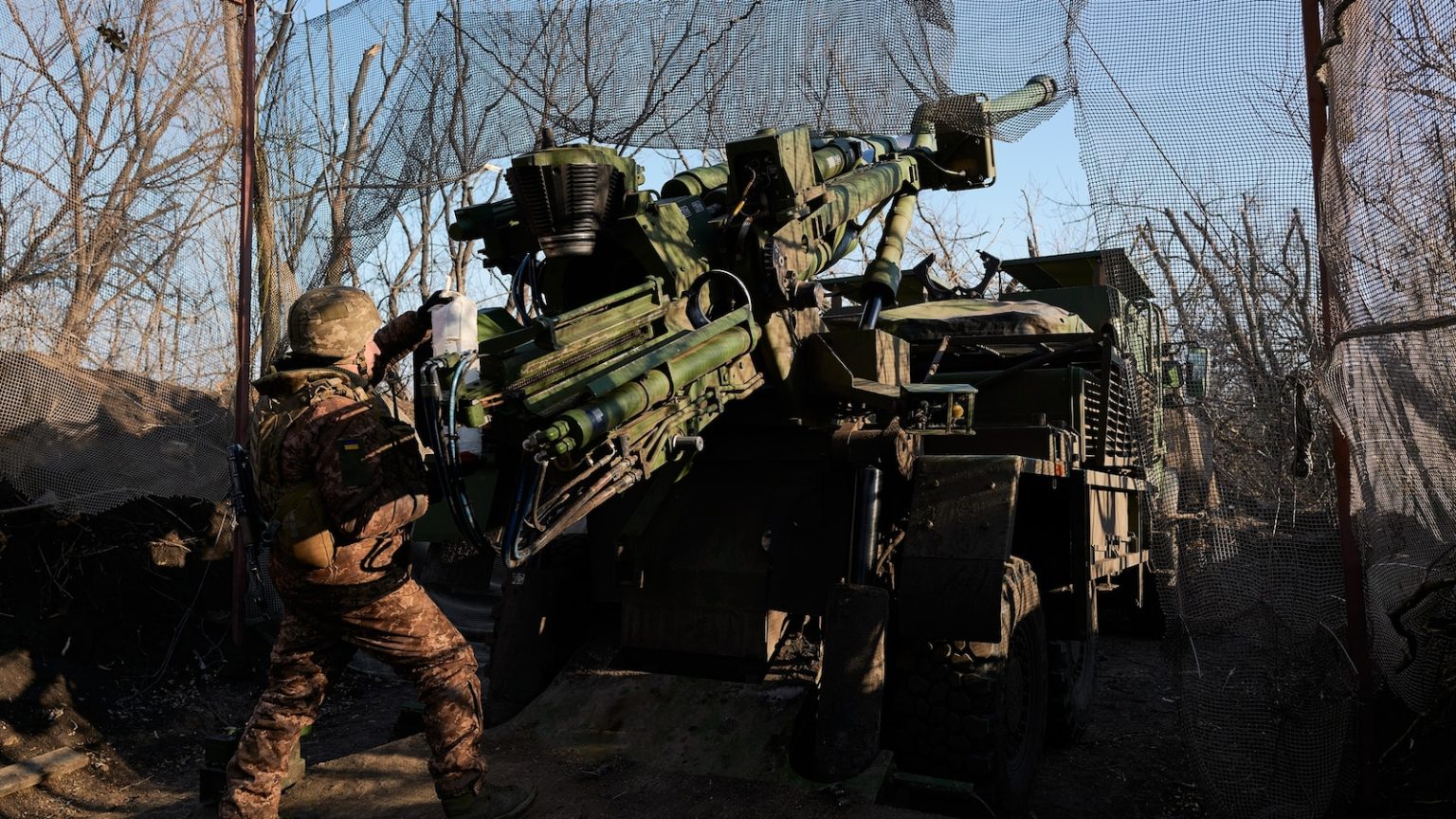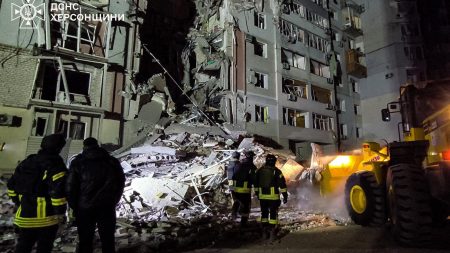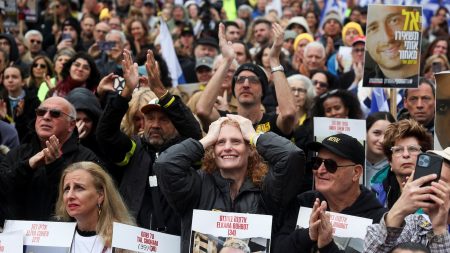U.S.-Russia Talks Signal a New Effort to End the Ukraine War
This week marked the beginning of a U.S.-led initiative to bring an end to the devastating war in Ukraine, which has raged on for nearly three years since Russia’s invasion in February 2022. The talks, held in Saudi Arabia, were a notable shift in diplomatic efforts, as they excluded both Ukraine and European leaders, raising concerns about the direction of negotiations. While the meeting represented the first high-level dialogue between the U.S. and Russia in nearly three years, the absence of Ukrainian representation has left many questioning whether the interests of the war-torn nation will be adequately represented.
The discussions were preceded by a stark warning from former U.S. President Donald Trump to Ukrainian President Volodymyr Zelenskyy, urging him to quickly negotiate an end to the war or risk losing his country entirely. This statement underscored the high stakes of the talks and the pressure being mounted on Ukraine to compromise. The resumption of dialogue between the U.S. and Russia also highlighted a significant shift in U.S. foreign policy, particularly under the Trump administration, which has emphasized unilateral actions over multilateral collaboration.
The last formal meeting between Russian Foreign Minister Sergey Lavrov and then-U.S. Secretary of State Antony Blinken took place in January 2022, just weeks before Russia launched its invasion of Ukraine. Since then, communication between the two nations has been sparse, with the next significant interaction occurring in March 2023 during a G20 summit in India. The renewal of talks this week, however, suggests a possible thawing of relations between Washington and Moscow, with both sides agreeing to reinstate diplomatic staff at their respective embassies after years of tit-for-tat expulsions.
Ukraine in a Difficult Spot
The exclusion of Ukraine from the U.S.-Russia talks has placed the nation in a deeply uncomfortable position. Ukrainian leaders have made it clear that they will not sign any agreement reached without their input, and Zelenskyy has vowed to reject any deal that compromises Ukraine’s sovereignty or territorial integrity. The U.S. has proposed a settlement that would grant Ukraine control over about 80% of its pre-war territory, with Russia retaining the lands it has seized since 2014. However, this proposal has been met with skepticism, as it would require Ukraine to relinquish significant ground and potentially abandon its long-term goal of NATO membership, which the U.S. now deems unrealistic.
Adding to Ukraine’s challenges is a proposed deal that would grant the U.S. a share of revenue from Ukraine’s key resources, including minerals, oil, gas, and ports. This arrangement has been interpreted as compensation for the extensive military and economic aid the U.S. has provided to Ukraine during the war. While a revised version of the deal is reportedly on the table, the terms remain contentious, with Zelenskyy pushing back against what he sees as an overreach by the U.S.
Analysts like retired Marine Col. Steve Ganyard have noted that Ukraine faces a stark choice: either accept a flawed agreement that limits its territorial and economic independence or risk further escalation of the war, which could result in even greater losses. “They see that the U.S. may be determining their fate, and that fate right now seems to be a choice between bad and worse,” Ganyard remarked.
Europe’s Role in the Crisis
The sidelining of Europe in the U.S.-led peace initiative has further complicated the situation. Historically, the U.S. has urged European nations to take greater responsibility for their own defense and regional stability. However, the Trump administration’s unilateral approach to negotiating with Russia has strained relations with European allies, who fear being left out of critical decisions about Ukraine’s future.
Despite these tensions, European leaders are exploring ways to support Ukraine. UK Prime Minister Keir Starmer has expressed willingness to deploy troops to Ukraine as part of a potential peacekeeping mission, while French President Emmanuel Macron is set to meet with Trump in Washington to discuss the crisis. Meanwhile, the U.S. has circulated a questionnaire to European capitals, seeking details on the military and security capabilities each nation could contribute to a post-war Ukraine.
The involvement of European leaders is crucial, as any lasting peace agreement will require significant resources and personnel to enforce. However, the lack of unity among European nations has left Ukraine vulnerable, as it waits for stronger backing from its allies. As Ganyard noted, “The best that the Ukrainians can hope for, at this time, if nothing else changes, is a settlement that is handed to them and is sort of a fait accompli that they will have to abide by.”
The Ongoing War and Its Toll
While diplomatic efforts unfold, the war on the ground continues to take a devastating toll on both Ukraine and Russia. Ukrainian forces have managed to hold their ground in key areas, leveraging drones and other advanced weaponry to great effect. However, they remain outnumbered and heavily reliant on Western military aid, which is now in jeopardy as the Trump administration has not sought new funding from Congress for Ukraine’s defense.
The human cost of the war cannot be overstated. Both sides have suffered extensive casualties, and neither appears to have the resources or manpower to sustain the conflict indefinitely. Ganyard emphasized that “neither has the manpower to be able to continue the war in the way that it has for years to come.” This reality has created a sense of urgency around the peace talks, as all parties acknowledge that a prolonged conflict serves no one’s interests.
For Ukraine, the stakes are particularly high. Without continued U.S. and European support, its ability to resist Russian advances will be severely diminished. As Ganyard noted, “The Ukrainians are a bit desperate here. They know that without U.S. military support, their future is limited.” This desperation has left Ukraine in a precarious position, where even a flawed peace agreement may seem preferable to the uncertainty of continued war.
A War of Words: Trump and Zelenskyy Clash
The diplomatic tensions have been matched by a heated rhetorical exchange between Trump and Zelenskyy. After Ukraine rejected the initial terms of the U.S.-proposed resource deal and was excluded from the U.S.-Russia talks, Trump lashed out at Zelenskyy, labeling him a “dictator” and falsely claiming that his approval ratings had plummeted to 4%. Zelenskyy fired back, accusing Trump of operating in a “disinformation space” and attributing some of the criticism to Russian propaganda campaigns.
The verbal sparring has drawn criticism from European leaders, who argue that such personal attacks undermine the legitimacy of diplomatic efforts. German Chancellor Olaf Scholz called Trump’s remarks “simply wrong and dangerous,” while others have expressed concern that the public feud could further destabilize the region.
Despite the inflammatory rhetoric, Ganyard has cautioned against reading too much into Trump’s public statements. “Chaos reigns, and it’s obviously a negotiating tactic that the president likes to use,” he said. “Oftentimes, the bark is much harsher than the bite is.” This perspective suggests that the actual negotiations may be more measured and constructive than the public exchange would suggest.
In a small but notable gesture of goodwill, Zelenskyy met with retired U.S. Lt. Gen. Keith Kellogg, the U.S. special envoy to Ukraine and Russia, earlier this week. The two reportedly had a productive conversation, with Zelenskyy expressing gratitude for U.S. assistance and Kellogg praising the Ukrainian leader’s courage and resilience. While this exchange offers a glimmer of hope, it remains to be seen whether such goodwill can translate into meaningful progress in the broader negotiations.
Conclusion
The U.S.-led peace initiative represents a significant turning point in the Ukraine war, yet it also raises profound questions about the future of the region and the role of global powers in shaping it. Ukraine finds itself in a precarious position, caught between the competing interests of the U.S., Russia, and Europe. While the resumption of U.S.-Russia dialogue offers a glimmer of hope for a negotiated settlement, the exclusion of Ukraine from these talks has heightened concerns about the fairness and sustainability of any agreement.
As the war rages on, the humanitarian toll continues to mount, and the need for a lasting resolution becomes increasingly urgent. The coming weeks and months will be critical in determining whether the current diplomatic efforts can yield a peace that respects Ukraine’s sovereignty, balances the interests of all parties involved, and charts a path toward stability and rebuilding. For now, the world waits with bated breath, hoping that diplomacy will prevail over division and that the voices of those most affected by the war will not be silenced.















